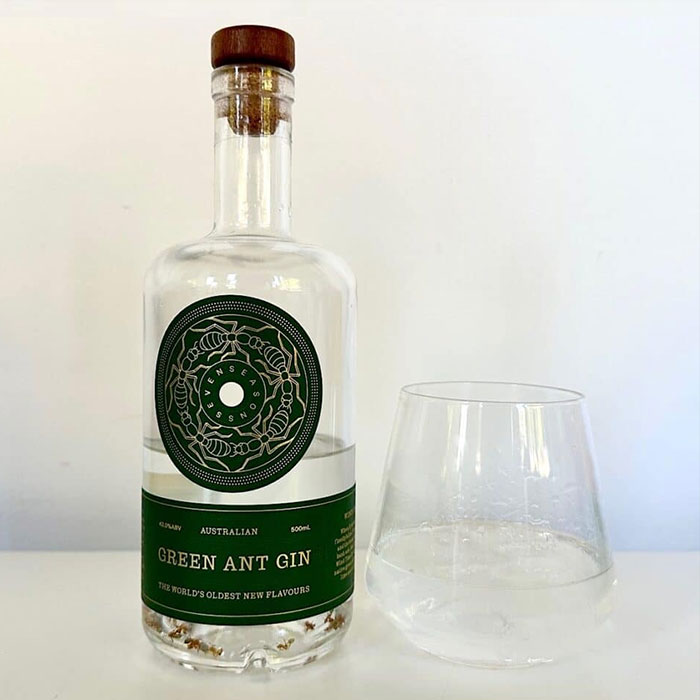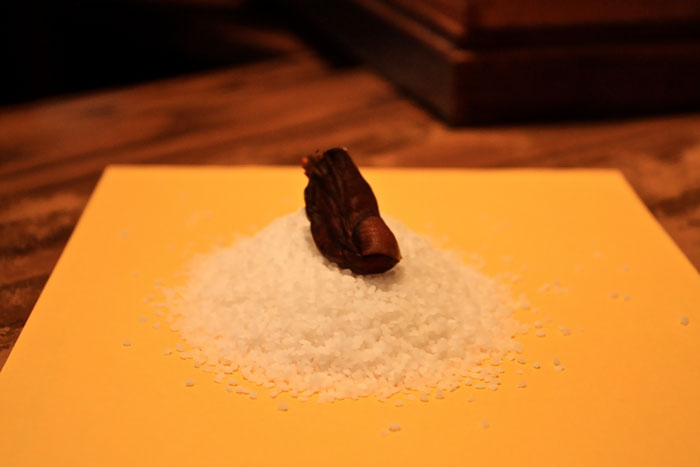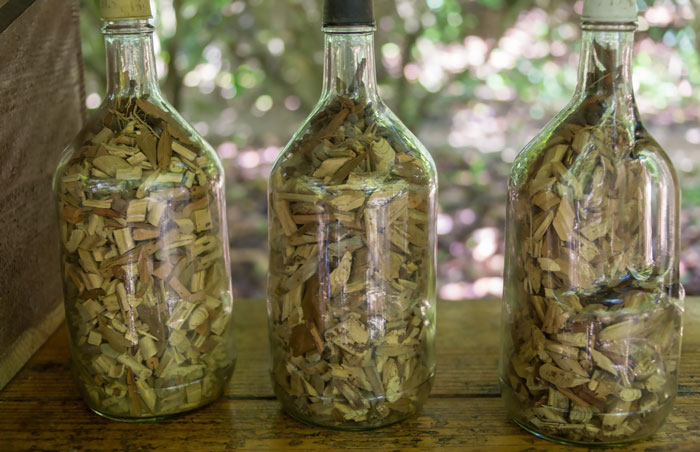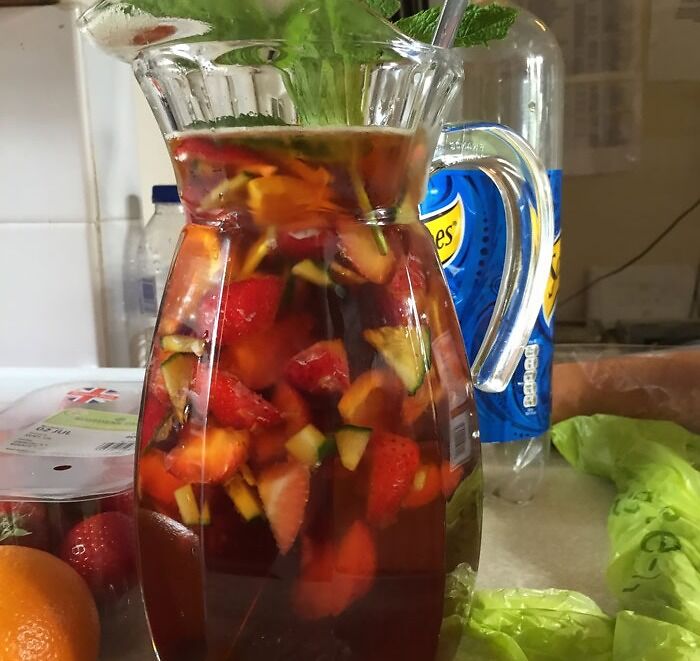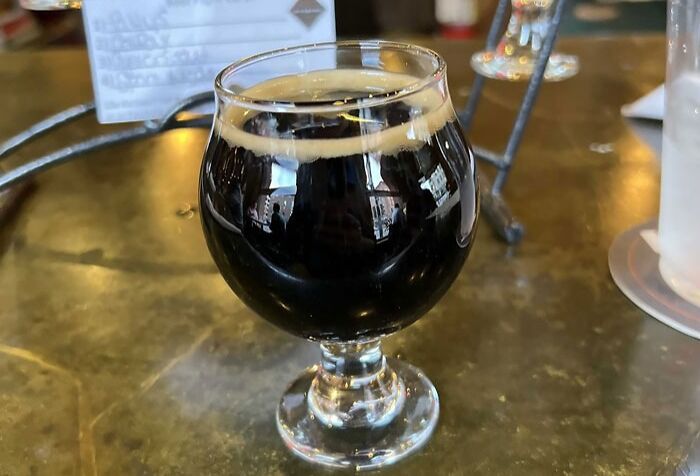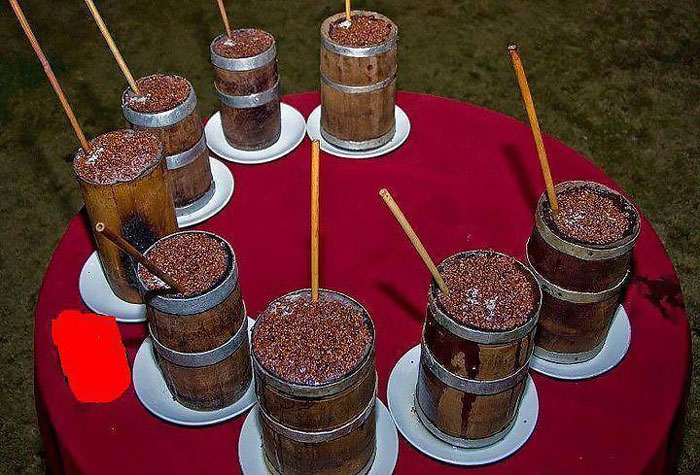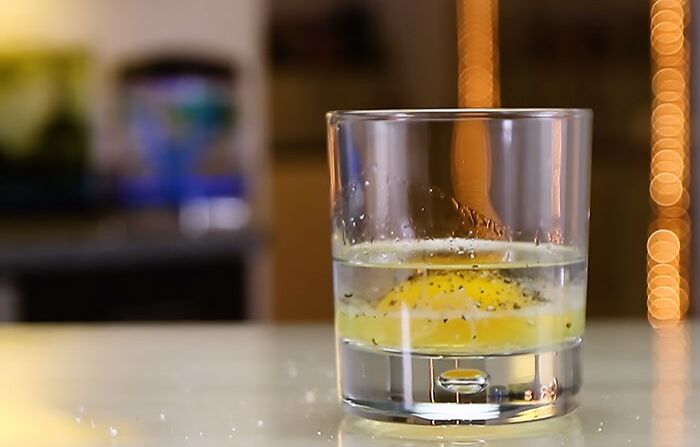If you think people who like their juice with pulp in it are weirdos, you haven’t seen anything yet. Our understanding of weird drinks goes beyond drinks with exotic fruits or anti-freeze-like colors.
Think of bizarre drinks made of ingredients you probably wouldn’t be comfortable with (or even thought about) putting inside your mouth. Think drinks made from animals’ naughty bits or ingredients sourced from their feces—THAT kind of weird.
This is what this list of the world’s most unusual beverages is about. As one would expect, many of these bizarre beverages are the by-products of weird traditions or heirlooms of folk medicine practiced way before PubMed was available to lambast them. Hence, many of these unusual drinks are somewhat of a cultural heritage and remain treasured by the locals in the areas they originated from.
And for the rest of the options on the list, there’s no other explanation than to blame (or thank?) the imagination of the human mind for them. Think of these strange and often nasty drinks as failed experiments, accidental inventions, or bold marketing initiatives that appealed to very particular groups of consumers.
To introduce you to the dark side of mixology and brew-making, we’ve compiled a list of some of the weirdest drinks consumed on a scale large enough to write about them. We invite you to upvote the drinks you would be willing (and brave enough) to try and which gross drinks you’d never be caught dead drinking!
Let us know in the comments whether there are any other weird local drinks we missed including in the list. Cheers!
This post may include affiliate links.
Ant Gin
This one is 100% Aussie and is actually not as strange as it sounds. The beverage company making the gin uses hand-harvested green worker ants, historically used for medicinal purposes by Indigenous Australians, before and after distillation. Apparently, the ants give the gin flavors of lime and coriander. Also, there are actual ants at the bottom of the bottle, and they are edible!
Does anyone else think that hand harvesting ants sounds like the most difficult job ever?
Placenta 10000
This Japanese peach flavor jelly drink is made of pig placenta. It's marketed to have regenerative effects since some believe consuming the placenta is very beneficial for the body. The alleged benefits include improving the mother’s energy and capacity to produce breast milk and even countering postpartum depression. Could that really be the case? Unfortunately, no scientific evidence supports that eating (or, in this case, drinking) the placenta provides human health benefits.
Tuna Tears Soju
This one originates from Korea, where soju, a distilled rice wine, is the national drink. There are many flavors of soju, but in seafood places known as "tuna houses," you may get a shot of tuna tears—a jelly-like concoction of soju and fluid from a tuna's eye. What does it taste like, you may ask? A little salty, just like tears.
Kumis — Mares’ Milk Alcohol
This mildly alcoholic beverage made out of horse milk, known as kumis, is customary in central Asian nations like Mongolia, Kazakhstan, and Kyrgyzstan. Horse milk, which inherently has more natural sugars than cow's milk, ferments in a process similar to winemaking. However, modern kumis is often produced from sweetened cows' milk because cows are, well, easier to milk than horses.
Snake Wine
It's not made from snakes, no. Not this variation, at least. In the more common variant of this bizarre drink, the snake is soaked in rice wine to infuse it with the snake's “essence.” Although the snakes are poisonous, allegedly, the alcohol in the wine makes the venom harmless. Old folklore claims that the drink can boost virility and even acts as an aphrodisiac (although it's much more likely to make you pass out). Another much more frightening variation involves reptile blood and bile mixed with rice wine.
Beer & Milk
One part beer and one part milk sounds like a recipe for disaster. Just think about the beer that has been wasted on this concoction. This must be one of the weirdest (and most painful) food pairings we've ever witnessed.
Gau Jal — Cow Urine Soft Drink
Gau jal, also known as "cow water," is marketed as a "healthier" alternative to Coke and Pepsi. It's a soft drink with cow urine as its base ingredient. The paramilitary group Rashtriya Swayamsevak Sangh, which created the beverage, claims that gau jal has numerous health benefits and is effective against a number of illnesses. But is it really?
Panda Dung Tea
Panda dung tea was reportedly the most expensive tea in the world when it first went on sale in April 2012, with 50 grams (~16 cups) going for $3,500. That's roughly $200 per cup! To grow the tea, An Yanshi, a Chinese businessman specializing in panda tea, used pandas' excrement sourced from nearby breeding facilities. He asserted that the tea grown from pandas' dung is healthy, given that pandas only eat wild bamboo and only absorb roughly 30% of its nutrients.
The Sourtoe Cocktail
There are many legends surrounding the origins of this disturbing beverage. Some believe it dates back to the 1920s when a feisty rum-runner named Louie ran into an awful blizzard and froze his toe off. Quite literally. His brother amputated it to prevent gangrene and put the toe in a jar of alcohol. Others say it originated in 1972 after a guy in Dawson City, Yukon, accidentally severed his toe with a lawnmower and, after the incident, donated it (the toe, not the lawnmower) to a neighboring pub, where it was pickled in booze. Because that's precisely what you do in scenarios like this. Nevertheless, whatever the true origin may be, it's a shot of whiskey with a nasty garnish: a floating mummified human toe.
Specialty Flavours From Jones Soda
Although some are special and limited releases, you can't argue that flavors like turkey and gravy, perspiration, ham, bacon, or Brussels sprout with prosciutto would only appeal to someone with a peculiar taste palate!
Mamajuana
One beverage you should watch out for when traveling to the Dominican Republic is mamajuana. Although it’s a national beverage, each family has their own recipe for mamajuana, and there is no single accepted version. Yet bark is one component every recipe calls for. With whatever additional ingredients the maker adds, red wine, honey, and rum are poured over the bark. According to the people, mamajuana serves various functions, including as an aphrodisiac and a remedy for stomach problems, colds, and the flu.
Mezcal De Pechuga (“Meat Breast Mezcal”)
Mezcal, a popular beverage in Mexico, does not fit our definition of weird on its own. One sort, though, sticks out among the others. Mezcal de pechuga, often known as “meat breast mezcal,” isn’t made in the same manner as regular mezcal. A raw chicken breast (or hen, rabbit, or turkey) is hung over the still during the mezcal de pechuga process and slowly cooked in the fumes. Prepared this way, it supposedly gives the beverage a punchier flavor.
Kidsbeer
Remember FADS fun sticks? Or other candy cigarettes kids used to simulate smoking? Probably not, because it has been a while. Well, it's a similar "pretend" product. While this Japanese beverage doesn't contain alcohol and tastes just like Coke, it has a beer-like appearance and is packaged in brown bottles. The drink was designed to create a frothy head to resemble exactly what Dad is drinking.
Pruno Or Prison Wine
We hope you never end up in circumstances where you would be tempted to make it. Unofficially "invented" in American prisons, pruno is created by preserving leftover fruits from meals and throwing them into a plastic garbage bag. Add some yeast from crumbled bread, sweeten it with sugar, soda (or even tomato sauce), hide it from the prison guards, and let it sit. After filtering through a shirt or pair of socks, it's best served at room—no, sorry—cell temperature.
Deer Penis Wine
Traditional Chinese medicine believes deer penis has health benefits, especially when consumed soaked in alcohol, essentially turning the pairing into deer penis wine. And like most Chinese wines, this one is also reportedly brutally potent and not something you'd want to sip on for your own pleasure.
Peruvian Frog Juice
Feeling like a hot mess, but even the 'hot' part is lacking? Andes mountain villagers think putting frogs in a blender would solve the problem. Some people in Peru and Bolivia believe that a juice mixture made primarily of frogs helps treat asthma, bronchitis, and sluggishness. Well, bad news for us and good news for frogs, there is no scientific proof that frog juice has any health benefits.
Wynkoop Brewing Company’s Rocky Mountain Oyster Stout — Bull Testicle Beer
What started as an April Fool's joke is now a Colorado specialty. After the Denver brewery released a spoof video unveiling a new beer made with cooked bull testicles (known as Rocky Mountain oysters in the West) and it went viral, the company decided to turn it into reality. The result is, hands-down, the ballsiest canned beer in the world.
Liquid Smoking
This is old news, but in 2008, a soft drink miming the experience of smoking a cigarette was promised to smokers craving a fag while at bars and restaurants. It promised to get rid of the urge to smoke within one to four hours. Because it relied on a South African plant extract rather than nicotine, it was reportedly claimed that users could "drink the smoking feeling."
Nước Yến Ngân Nhĩ — Bird's Nest Drink
Product of Vietnam, this drink is made from white fungus, an actual bird’s nest, and other ingredients with names we can't pronounce. Apparently, it tastes like cake batter.
The bird’s nest part is made from the nests of the swiftlet, which makes its nests out of its own solidified saliva. (So it’s not a “twigs and leaves” nest.) This drink apparently only contains a tiny bit of swiftlet nest.
Reindeer Antler Whiskey
When in Thailand, try a traditional Thai whiskey, also known as Yaa Dong (which translates to “pickled medicine”), made from rice grain infused with ginseng root, medicinal herbs, and actual reindeer antlers. The horns are said to provide many health advantages, including greater vigor and virility *insert a “horny” pun somewhere*. Besides, some people in Southeast Asia even think consuming this whiskey would elevate your social standing!
Smoker’s Cough Shot
There's little to say about this one. The revoltingly named short drink is a shot of Jägermeister with a tablespoonful of mayonnaise plonked on top. Bottoms up, huh?
Tapeworm Shot
The appetizingly named Tapeworm shot consists of vodka, tabasco, black pepper, and, drum roll please... mayo! What started as a recipe for a Bloody Mary ended up as a formula for the trots.
Chicha — Saliva Drink
Don't be deceived by the fact that chicha looks like apple cider. Those who have heard about chicha know it's often fermented using human spit. Although not all, some chicha variations are made by chewing jora, a kind of yellow maize, into balls and then fermenting the masticated balls in a brew. Apparently, chewing enables the enzymes in the mouth to convert the starch to sugar. Even though a drink made from someone's spit could be viscerally disturbing to some, the beverage is widely consumed and valued in Peru.
So it’s basically a cup full of fermented backwash corn water?
Hoihoi Tatea
If you had the pleasure of visiting a famed Wellington bar in New Zealand back in 2011, you might have noticed something odd about your round of shots. Called "hoihoi tatea" by the locals, these cloudy, milk-like shots are made with horse semen. Those who have tried them made jokes about getting pregnant and giving birth to horse-human hybrids. Apparently, not a very popular drink choice among men.
Tongba
If you're seeking a familiar beverage consumed in an unusual way, try millet-based beer. Tongba, the traditional drink of the Limbu people, is produced by a several-week-long process of fermenting whole grain millet. When it's time to drink, it's often served in a barrel-shaped vessel called tongba, hence the name. The right amount of millet will already be in the vessel, so you only need to add hot water and let it sit before you can drink. You then use a bamboo straw, which serves as a filter, allowing you to effectively consume the beer while leaving the millet and other undesirable residues behind. By adding more hot water, you can keep sipping until all you can taste is lukewarm water.
Boza
In terms of popularity and consumption, boza is a drink equivalent to milk in the United States. Depending on location, boza is made from fermenting maize, wheat, millet, or bulgur. It's somewhat of a national pastime in Turkey, Bulgaria, and other Caucasian nations. Boza is also said to be an excellent probiotic for the gut due to the microorganisms in it. However, unlike milk, this one also contains a low amount of alcohol, so it should be consumed with caution!
Much like any kombucha-style drink, there are small/varying amounts of alcohol from the fermentation process :)
Tarantula Venom Cocktail
The Aragog cocktail, named in honor of the giant spider featured in J.K. Rowling's books, has an undisclosed formula but is known to contain Mexican mezcal, Chilean pisco, Brazilian cachaça, mango juice, and lemon. And if three different alcohols are not enough to make one feel woozy, a teeny drop of spider venom will make the lips quiver, the tongue go numb, and the throat tickle! When asked about the health effects of drinking Aragog, its creator, Romeo Palomares, assured he sought medical advice before serving it to clients and devised a safe dose. Unfortunately, the bar where the cocktail was served is no longer in operation.
Or you can just eat the tarantula, they are fried in garlic. (Cambodia) Cambodia-2...6675f6.jpg 
BustUp Drink
Pueraria Mirifica is one of the main active ingredients in BustUp, beauty shots claiming to increase breasts without surgery. Pueraria Mirifica, also known as Kwao Kruaa, is a traditional Asian ingredient that claims to solve various "womanly problems," such as hot flashes and dryness "down there," and is apparently clinically proven to aid in breast enhancement. According to the product's description, this instant drink is a healthy, safe, and efficient way to increase cup size and "defy gravity." Well, that would be quite a cupful.
I hope all of you pandas have a fantastic day, free of trolls.
Black Ivory Coffee
The Arabica coffee cherries used to make this Thai coffee are ingested by elephants and then retrieved from their dung. Every family caring for an elephant blends the cherries with the animal's favorite foods, such as rice, bananas, and tamarind. Apparently, this combination makes it more likely that the elephant will eat the "treat"!
Sureeeee lets eat cherries out of dung! No wait! Let's make coffee from them!
Kopi Luwak — Civet Coffee
Civet coffee, also known as kopi luwak, is made from partially digested coffee cherries consumed and then excreted by Asian palm civets. These cat-like creatures are said to be very picky and choose only the finest and most ripe coffee cherries. Regarding taste, the food writer for The Washington Post, Tim Carman, described that kopi luwak available to American consumers "tasted just like...Folgers. Stale. Lifeless. Petrified dinosaur droppings steeped in bathtub water." The description itself might be tempting enough to try it... never.
Specialty Ramune Flavours
The Japanese might be the only ones who can transform Asian specialties into soda. Ramune makes its bubbly drinks in various unique tastes, including bubble gum, white champagne, lychee, and blueberry. However, would you be down to try a curry-flavored one? Maybe onion? Or perhaps you are more into spicy wasabi? If so, Ramune might satisfy some of the weirdest cravings.
Coloured Draft From Abashiri Brewery
The colored beer lineup from Japan's Abashiri Brewery, which includes the blue Ryuhyo Draft, scarlet Hamanasu Draft, green Shiretoko Draft, and pink Jyaga Draft, is the brewery's claim to fame. The idea for the collection was inspired by the four seasons of Hokkaido, the island in northern Japan where Abashiri is headquartered.
The icy Okhotsk Blue Ryuhyo ("drift ice") Draft could be the most well-known drink made by Abashiri Brewery. It's purportedly created using water from melted icebergs and seaweed, giving it its fun Kool-Aid Blue color.
Prairie Chicken Cocktail
Would you really expect something else from a cocktail named "Prairie Chicken"? Gin, raw egg yolk, and salt and pepper are the ingredients you would not expect to find in a cocktail, yet, there we have it. Between this concoction of a drink and eating a raw egg, the latter sounds like a more appealing option.
Seagull Wine
“Let’s ferment this lifeless seagull in water, leave it to sit in the sun and then drink the fluid” might have been the thinking that led to this invention. Hard to locate outside the freezing north and rarely available in liquor stores, the creation of seagull wine is credited to the Inuits. You better believe the beverage doesn’t go down easily when left to ferment in the sun. However, what it lacks in flavor, it more than makes up for in potency and greatness of the hangover that follows.
Belly Button Beer
The yeast strains used to make the Belly Button Beer came from the navels of its founders at Melbourne's 7 Cent Brewery. Apparently, they tasted samples of beer created with each brewer's yeast before selecting the one with the best flavor. The beer with navel origins is described to have flavor notes of banana and clove.
Tezhi Sanbian Jiu
This bottle of rice wine appears like every other bottle in the liquor aisle. Yet, the contents of it might surprise you—three different animal penises. According to Foodbeast, seal penis, deer penis, and Cantonese dog penis were brewed into the alcohol to give the drinker an extra stamina kick, something similar to what Viagra would do. What does three genitalia wine taste like? Ale Sessions claims it tastes like an old port with a strong vinegar flavor and a hint of prune juice.
Eggermeister
Why would someone do this to a drink that is perfectly good on its own? Were they eating a pickled egg over a shot of Jägermeister and then dropped it in to come up with it? Well, whoever is into it might as well use a boiled egg with the yolk taken out as a shot glass.
a bar full of people drinking this would have the worst smell ever!
Gilpin Family Whisky — Elderly Diabetics’ Urine Drink
The number on a bottle of Gilpin Family Whisky doesn't indicate the bottle's age; instead, it is the age of the volunteer, an elderly diabetic whose sugar-rich urine was used to make the whiskey. Cheers to good health!
Tatra Tea
The tea version of Irish coffee is Tatra tea. Essentially, it’s a spirited spin on black tea, with added extracts of mountain herbs, fruit extracts, natural sugar, and pure water from the Tatra Mountains. Tatra tea has its roots in the traditions of the people who once resided in Slovakia’s High Tatras Mountain ranges. It was customary to offer guests a cup of hot tea flavored with herbal liqueur to ward off the cold.
Kvass
Kvass is a low-alcohol fermented cereal-based beverage with a light-brown hue, a somewhat hazy appearance, and a sweet-sour flavor. It’s traditionally created by steeping rye bread, rye flour, and malt in hot water, then fermenting the mixture at room temperature with sugar and bread yeast or baker’s yeast. It’s a popular beverage in the Baltic states, Russia, Ukraine, and Poland.
On a related, but somewhat less disgusting note, I once tried a shot of whiskey with a shot of pickle juice as a chaser. It wasn't bad at all, as the pickle juice completely removes the alcohol aftertaste from your mouth (I don't like whiskey, so that's a good thing)
Won't be trying cuz I love my whiskey but pickle juice is AWESOME for the morning after..... Tried and true
On a related, but somewhat less disgusting note, I once tried a shot of whiskey with a shot of pickle juice as a chaser. It wasn't bad at all, as the pickle juice completely removes the alcohol aftertaste from your mouth (I don't like whiskey, so that's a good thing)
Won't be trying cuz I love my whiskey but pickle juice is AWESOME for the morning after..... Tried and true

 Dark Mode
Dark Mode 

 No fees, cancel anytime
No fees, cancel anytime 







